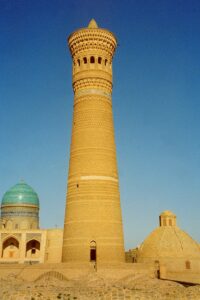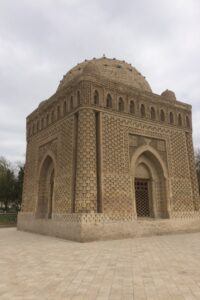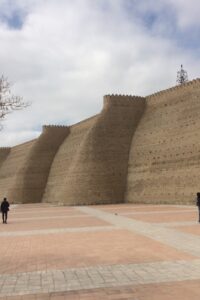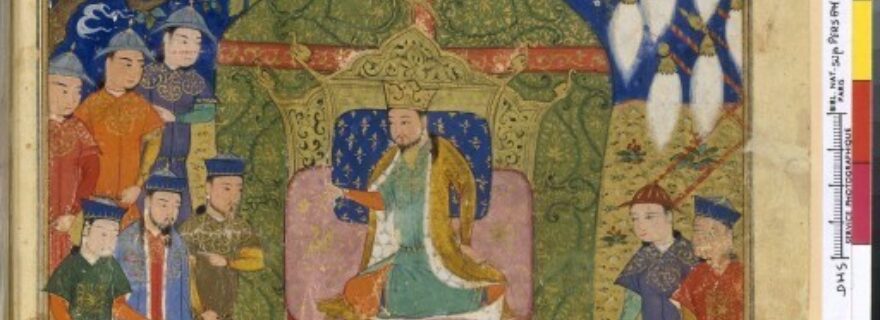A 13th-Century Sufi Socialist Revolution?
The revolt of the Sufi Mahmud Tarabi in Bukhara in the 1230s was a religious and social movement, targeting both the non-Muslim Mongol overlords and wealthy landowners. Dr. Tobias Jones investigates

The 13th century is often seen as a catastrophe for the Islamic world. The Mongols invaded the lands of Islam, sacking many of its greatest cities: Samarqand and Merv in the east, Baghdad and Aleppo in the west. One of those that succumbed to Mongol power was Bukhara, long a seat of power of Central Asian rulers and dynasties. Juvaini, the 13th-century Persian historian, claimed that when Chinggis Khan took the city in 1221, he ordered the Quʿrans of the Friday mosque to be dumped out of their cases and the cases to be used as mangers for his horses. He famously was supposed to have declared, ‘I am the punishment of God’, announcing his arrival as retribution for the sins of the Muslims.
Bukhara became part of the Mongol administration of Turkestan, governed by the famed official, Mahmud Yalavach. However, evidently not everyone in Bukhara accepted Mongol rule so easily. In 1238–9, a man named Mahmud Tarabi, from an outlying village, began to gain followers thanks to his miraculous healing abilities. He was apparently only a manufacturer of sieves, but Juvaini claimed that he was a Sufi as well. Through his sister’s coaching in magic, and his conversations with jinns, Mahmud won over many of the common people of the area. Eventually he was able to gain the support of the chief men of Bukhara: the Friday prayers were read in his name as the new sultan of the city, with a mandate to remove the unbelieving Mongols. Naturally, the Mongols did not take this lightly, and sent forces to retake the city, succeeding on the second attempt. Mahmud was killed, and the Mongol troops began butchering the inhabitants. Yalavach was able to intercede for them and the inhabitants were spared, while the city returned to the Mongol fold.
The rebellion was short-lived, therefore. Its form tells us much about the social and religious milieu of the time, however. Sufi holy men abounded at this time, and many of them were patronised by the Mongol elite. Mahmud’s rise is notable for its combination of this spiritual aspect with that of a more ‘socialist’ nature. His movement rapidly became a peasant revolt, targeting not just the Mongol overlords, but the rich of Bukhara also. The houses of the wealthy of Bukhara were pillaged, and after the first defeat of the Mongols, landowners and tax collectors were attacked by Mahmud’s followers. It was these men who summoned the Mongols to do away with Mahmud, showing that they preferred Mongol social order to a system run by their common compatriots. Despite this seeming tension, Juvaini himself apparently met learned people who claimed to have witnessed Mahmud turning dog excrement into a cure for blindness. Juvaini states, ‘As for me, if I should see such things with my own eyes, I should concern myself with the treatment of my eyesight.’
Juvaini’s account tells us much about the position of Muslims under Mongol power. As an administrator and historian of the Mongols, Juvaini was in a peculiar position. He saw it as his role to explain and legitimate Mongol rule for those who had trouble accepting it. His emphasis in his account of Mahmud’s revolt is not on the religious differences of Mongols and Muslims, or any ethnic or cultural solidarity among Bukharans. Instead, it highlights the ignorance and heretical beliefs of Mahmud and his followers, mocking the near-messianic fervour of the common people eager to be spat upon by their leader, or their willingness to go into battle despite lacking armour. In contrast to this, he shows the Mongols, guided by wise and right-thinking Muslim administrators such as Yalavach (and presumably Juvaini himself), as restorers of order, justice and proper social hierarchy in the world. In this way, Juvaini subtly reinforces Mongol rule, encourages its acceptance, enumerates the potentially horrible consequences of not doing so, and establishes the credentials of his administrative class to temper the worst aspects of that rule. It is an astonishing piece of history-writing.
Mahmud Tarabi’s revolt also brings to mind other religio-social movements of the period. The rebellion of Baba Ishaq against Seljuq rule in Anatolia in 1240 combined aspects of popular religiosity and anti-corruption ideas. Messianic characters appeared, such as the Mongol governor of Anatolia Temurtash, who claimed to be the mahdi in the 1320s. The Sarbadar movement in eastern Iran in the 14th century has also been compared to Mahmud’s uprising, but seems to have had a less religious inclination. Sufi popular religious movements continued despite these failures, and in the 15th century culminated in the religiously syncretistic revolt of Shaykh Bedreddin against the Ottomans and the Safavid establishment of a state in Iran in 1501. The revolt of Mahmud Tarabi can now be added to this fascinating trend.





0 Comments